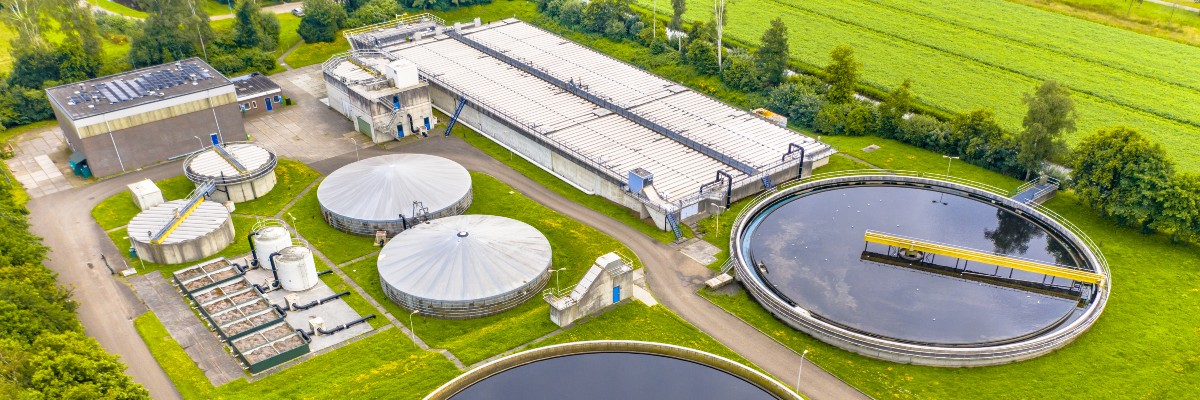Comprehensive Wastewater Solutions for Home and Business Needs
Comprehensive Wastewater Solutions for Home and Business Needs
Blog Article
Recognizing Wastewater Treatment Processes and Their Environmental Influence
The intricacies of wastewater treatment processes play a critical role in mitigating environmental challenges connected with water contamination. Each phase, from preliminary to advanced treatments, is made to resolve particular contaminants, eventually guarding both public wellness and water ecological communities.
Review of Wastewater Treatment
Exactly how is wastewater changed right into a safe resource for the atmosphere? Wastewater treatment is a vital procedure designed to get rid of pollutants from made use of water, therefore securing public wellness and securing communities. This procedure begins with the collection of wastewater from domestic, industrial, and business sources, which is then routed to treatment centers.
At these facilities, different physical, chemical, and biological techniques are employed to treat the wastewater. Subsequently, organic treatments, such as turned on sludge processes, use microorganisms to break down organic matter.
The dealt with effluent can be safely released into all-natural water bodies or reused for watering and commercial purposes, promoting resource conservation. Additionally, the therapy process produces biosolids, which can be repurposed as plant foods or dirt changes, additionally enhancing sustainability.
Phases of Therapy Procedures
The wastewater therapy process generally is composed of 3 main stages: preliminary, primary, and additional therapy. Each phase serves a distinctive role in lowering the pollutant lots and making sure the effluent meets environmental standards prior to discharge.

The primary therapy stage concentrates on the physical splitting up of put on hold solids from the wastewater. With sedimentation, larger fragments settle at the base of sedimentation containers, forming sludge, while lighter products, such as oils and oils, float to the surface area and are skimmed. This process substantially decreases the natural and not natural load in the wastewater.
Second treatment is a biological process targeted at additional lowering the focus of natural issue. Numerous methods, including turned on sludge systems and trickling filters, make use of microbes to metabolize organic toxins. This phase is vital for accomplishing the needed biochemical oxygen need (FIGURE) decrease, ultimately resulting in cleaner effluent prepared for discharge or additional treatment. Each stage is important in protecting ecological and public wellness.

Advanced Treatment Technologies
Adhering to the additional treatment procedures, advanced treatment technologies play a vital function in more enhancing the high quality of dealt with wastewater. These modern technologies are made to eliminate residual impurities that are not properly gotten rid of throughout primary and second treatments, guaranteeing the effluent meets strict regulative criteria.
Among the extensively utilized sophisticated treatment techniques are membrane filtering, reverse osmosis, and advanced oxidation procedures. Membrane layer purification, including microfiltration and ultrafiltration, works in like it dividing great bits, microorganisms, and colloids from the water (Wastewater). Reverse osmosis uses semi-permeable membrane layers to eliminate liquified solids, resulting in premium water suitable for different applications
Advanced oxidation processes (AOPs) employ strong oxidants to weaken organic contaminants, consisting of drugs and personal treatment products that are immune to traditional therapy. These approaches boost the biodegradability of intricate substances, facilitating their elimination.
Another considerable innovation is making use of organic nutrient removal processes, which especially target nitrogen and phosphorus, preventing eutrophication in getting water bodies. On the whole, advanced therapy technologies are important for achieving higher degrees of purification, advertising water reuse, and guarding public health and wellness while resolving the obstacles associated with wastewater management.
Environmental Advantages of Therapy
Many ecological benefits develop from effective wastewater therapy processes that contribute to ecosystem health and sustainability. Mostly, these processes significantly decrease the launch of harmful toxins into natural water bodies, which aids keep aquatic ecosystems. By getting rid of contaminants such as hefty metals, nutrients, and pathogens, dealt with wastewater reduces the risk of waterborne illness and advertises biodiversity in aquatic environments.
Furthermore, wastewater treatment centers usually utilize innovative modern technologies that make it possible for water recycling and reuse. This practice not just conserves fresh water sources but likewise decreases the demand on natural water materials. Boosted nutrient removal from wastewater can also prevent eutrophication, a procedure that brings about algal blooms and succeeding oxygen deficiency in water systems.
In addition, effective treatment processes can decrease greenhouse gas exhausts, specifically methane and laughing gas, which are often launched during unattended wastewater decomposition. By recording and using biogas from anaerobic digesters, facilities can transform waste into renewable resource, therefore adding to a decrease in fossil gas dependence.
Challenges and Future Trends
While the environmental advantages of wastewater treatment are clear, numerous challenges persist that impede optimum outcomes in this area. One significant problem is aging infrastructure, which usually brings about ineffectiveness and enhanced operational costs - Wastewater. Numerous treatment plants were designed years back, and their abilities do not align with modern-day needs, that include more stringent regulative standards and higher more information volumes of wastewater as a result of urbanization

Looking in advance, there is a growing focus on source healing and round economic climate concepts within wastewater treatment. Advancements such as anaerobic digestion, which can create biogas, and progressed filtration modern technologies are gaining traction. These techniques not only boost therapy efficiency however additionally advertise sustainability.
Ultimately, resolving these challenges requires collaboration amongst stakeholders, investment in technology, and a commitment to continuous research study. By accepting these patterns, the wastewater therapy market can advance to meet the demands of an altering atmosphere and click reference society.
Final Thought
In final thought, wastewater therapy procedures play a crucial function in enhancing environmental quality and public health. The multi-stage therapy structure, paired with innovative innovations, properly mitigates pollution and promotes sustainable water monitoring.
Report this page